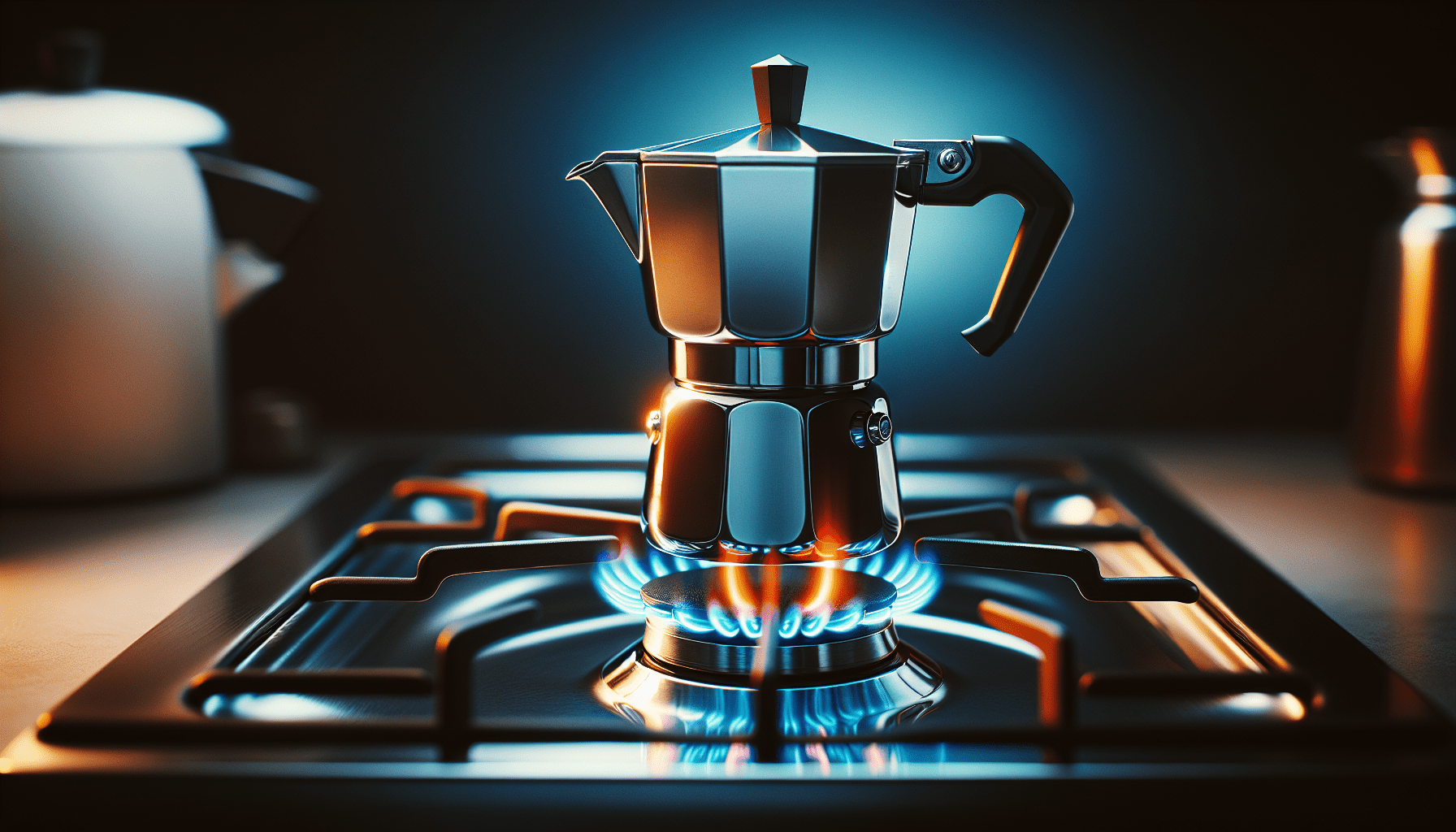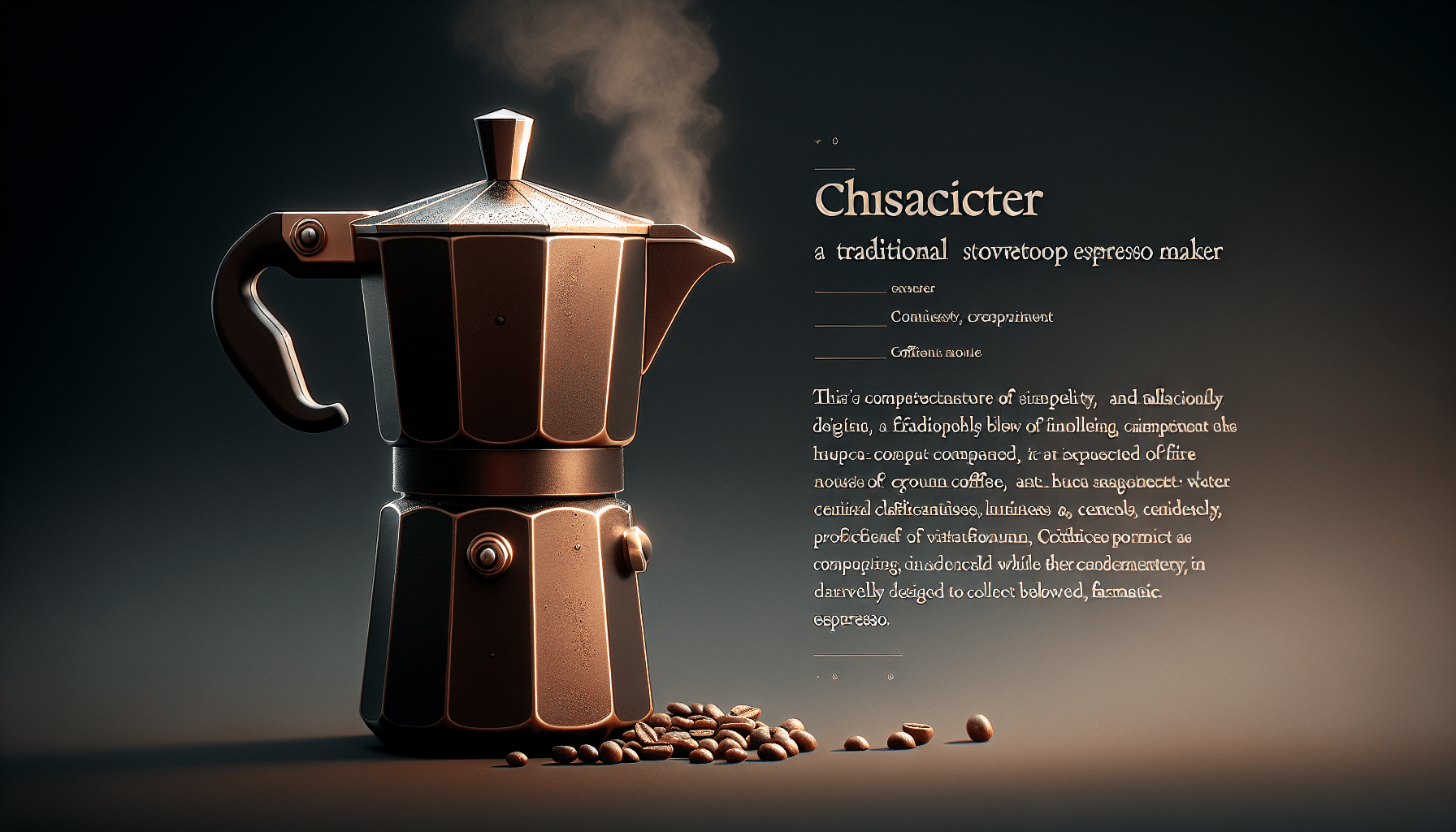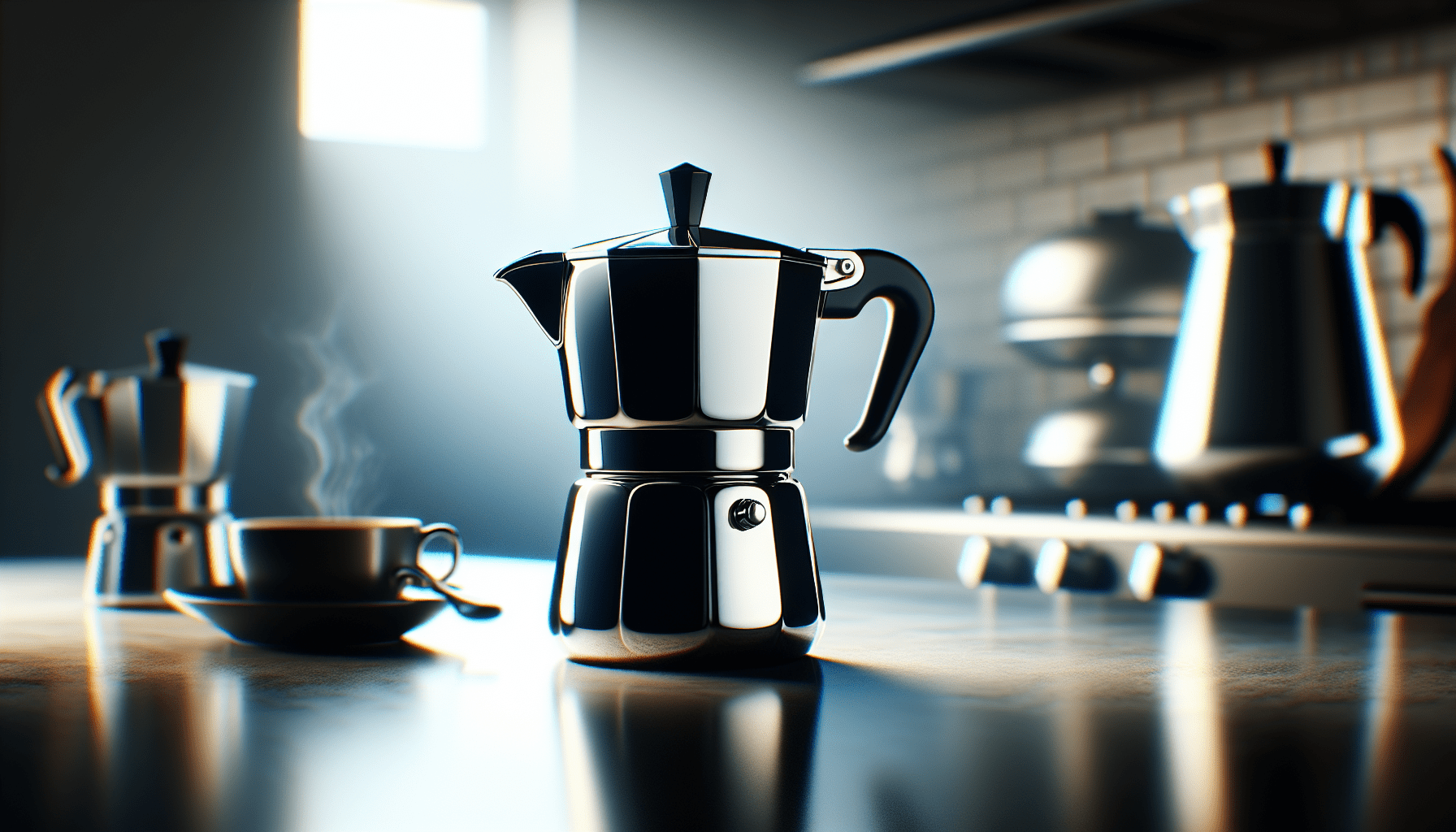Have you ever wondered if you can adjust the brewing time with a stovetop espresso maker? Well, the answer is yes! With a stovetop espresso maker, you have the flexibility to control the brewing time and customize your espresso to your desired taste. Whether you prefer a quick shot of espresso or a more robust and flavorful brew, the brewing time can be easily adjusted to cater to your preferences. So, say goodbye to bland and generic espresso and say hello to a rich and personalized coffee experience with a stovetop espresso maker.
Understanding the Brewing Process
How does a stovetop espresso maker work?
A stovetop espresso maker, also known as a Moka pot, is a traditional Italian coffee brewing device that uses steam pressure to extract the flavors from ground coffee beans. The brewing process involves three main components: the bottom chamber, the middle filter basket, and the top chamber.
To begin the process, water is filled in the bottom chamber and coffee grounds are placed in the filter basket. When the pot is heated on a stovetop, the water heats up and creates steam pressure. This pressure forces the hot water to rise through the coffee grounds and into the top chamber, where the brewed espresso collects.
What factors affect the brewing time?
Several factors can influence the brewing time when using a stovetop espresso maker. These factors include the type of stovetop espresso maker being used, the amount of coffee grounds used, the desired strength of the espresso, and the heat source and intensity.
Importance of Brewing Time
Why is brewing time significant in espresso making?
Brewing time plays a crucial role in determining the quality and taste of the espresso. The extraction process, where the water comes in contact with the coffee grounds, takes place during the brewing time. The duration of this process affects the flavor profile of the espresso, including its strength, bitterness, acidity, and overall balance.
How does brewing time affect the taste and strength of the espresso?
The brewing time has a direct impact on both the taste and strength of the espresso. A shorter brewing time tends to result in a lighter, milder flavor, while a longer brewing time leads to a stronger, more intense taste. The length of time affects the extraction of different compounds from the coffee grounds, including oils, acids, and sugars, which ultimately contribute to the overall flavor profile of the espresso.
Standard Brewing Time for Stovetop Espresso
What is the usual brewing time for stovetop espresso makers?
The standard brewing time for stovetop espresso makers typically ranges from 5 to 10 minutes. However, it is important to note that the exact brewing time can vary depending on the specific stovetop espresso maker being used, as well as personal preferences for taste and strength.
Why is there a standard brewing time?
The standard brewing time serves as a general guideline to ensure a balanced and well-extracted espresso. It provides a starting point for users to achieve a satisfactory result without under-extracting or over-extracting the flavors from the coffee grounds. However, it is important to remember that brewing time is not a rigid rule, and it can be adjusted according to individual preferences.
Factors That Influence Brewing Time
Type of stovetop espresso maker
Different types of stovetop espresso makers may have variations in the brewing time. Some models are designed to heat up more quickly, while others may take longer to reach the desired temperature. It is important to refer to the manufacturer’s instructions or specifications to determine the optimal brewing time for a specific stovetop espresso maker.
Amount of coffee grounds
The amount of coffee grounds used can significantly impact the brewing time. A larger quantity of coffee grounds will require more time for the water to pass through and extract the flavors. Conversely, using a smaller amount of coffee grounds may result in a shorter brewing time. It is essential to experiment with different ratios to find the right balance and adjust the brewing time accordingly.
Desired espresso strength
The desired strength of the espresso also influences the brewing time. If a stronger espresso is desired, a longer brewing time is typically required to extract more of the coffee’s flavor compounds. On the other hand, a shorter brewing time can be used to achieve a milder taste. Understanding personal preferences for strength can guide the adjustment of the brewing time.
Heat source and intensity
The heat source and intensity play a significant role in determining the brewing time. Different stovetops or heat sources may have varying levels of heat output, which can affect how quickly the water heats up and the brewing process progresses. Adjusting the heat intensity can help control the brewing time and achieve the desired results.
Adjusting the Brewing Time
Shortening the brewing time
If a shorter brewing time is desired, there are several adjustments that can be made. One option is to use a finer grind size for the coffee grounds. Finer grounds allow the water to pass through more quickly, reducing the overall brewing time. Additionally, adjusting the heat source to a higher intensity can expedite the brewing process. However, it is essential to monitor the process closely to prevent over-extraction or burnt flavors.
Lengthening the brewing time
To lengthen the brewing time, certain modifications can be applied. Using a coarser grind size will slow down the extraction process, requiring more time for the water to flow through the coffee grounds. Lowering the heat intensity can also prolong the brewing time, allowing for a more thorough extraction of flavors. It is important to ensure that the heat remains consistent to avoid under-extraction.
Experimenting with different brewing times
The flexibility of a stovetop espresso maker allows for experimentation with different brewing times. By gradually adjusting the variables such as grind size, coffee quantity, and heat intensity, you can explore various brewing times to find the optimal balance for your desired taste and strength. Taking notes during each experiment can help track the adjustments made and their impact on the final result.
Effects of Adjusting Brewing Time
Impact on taste and flavor
Adjusting the brewing time can have a significant impact on the taste and flavor profile of the espresso. Shortening the brewing time may result in a lighter and more delicate flavor, while lengthening the brewing time can produce a bolder and more robust taste. It is important to note that altering the brewing time may also influence the acidity, bitterness, and overall balance of the espresso.
Influence on espresso strength
The strength of the espresso can be influenced by adjusting the brewing time. A longer brewing time typically leads to a stronger espresso as more flavor compounds are extracted from the coffee grounds. Conversely, a shorter brewing time may result in a milder espresso. Finding the right brewing time that aligns with personal preferences for strength is key to enjoying a satisfying cup of espresso.
Tips for Adjusting Brewing Time
Understanding the impact of adjustments
Before making any adjustments to the brewing time, it is essential to understand the potential impact they may have on the final result. By grasping how variables such as grind size, coffee quantity, and heat intensity affect the brewing process, you can make more informed adjustments and achieve desired outcomes.
Gradually modifying brewing time
When adjusting the brewing time, it is advisable to make gradual modifications rather than drastic changes. This allows for a more controlled experimentation process and prevents drastic shifts in taste and strength. By incrementally increasing or decreasing the brewing time, you can fine-tune the extraction process and find the optimal brewing time that suits your preferences.
Taking notes for future reference
Keeping a record of the adjustments made and the corresponding results can be highly beneficial for future brewing sessions. By taking detailed notes on variables such as grind size, coffee quantity, heat intensity, and brewing time, you can create a reference guide that helps reproduce successful brews and avoid any potential pitfalls.
Potential Challenges when Adjusting Brewing Time
Over-extraction or under-extraction
One of the primary challenges when adjusting brewing time is achieving the right level of extraction. Over-extraction occurs when the brewing time is too long, resulting in a bitter and unpleasant taste. Under-extraction, on the other hand, happens when the brewing time is too short, leading to a weak and underdeveloped flavor. Finding the right balance is crucial to avoiding these challenges.
Inconsistent results
Adjusting the brewing time without careful monitoring and control can lead to inconsistent results. Factors such as variations in heat intensity, grind size, or coffee quantity can impact the overall brewing time and result in variations from one brew to another. Consistency in variables and attentive observation are key to achieving consistent and satisfactory results.
Finding the right balance
Finding the right balance when adjusting the brewing time can be challenging due to the multitude of variables involved. Achieving the perfect combination of grind size, coffee quantity, heat intensity, and brewing time requires patience and experimentation. It is important to embrace the process and be open to making further adjustments until the desired balance is achieved.
Alternative Methods to Adjust Brewing Time
Pre-heating the espresso maker
Pre-heating the stovetop espresso maker before starting the brewing process can help reduce the total brewing time. By heating the device without the coffee grounds or water, the initial temperature inside the pot increases, speeding up the process of heating the water. This can be particularly beneficial when a shorter brewing time is desired.
Modifying the grind size
Adjusting the grind size of the coffee grounds is another effective method to alter the brewing time. Finer grounds result in a shorter brewing time, while coarser grounds require a longer brewing time. Experimenting with different grind sizes can help achieve desired brewing times and flavors.
Using different heat settings
Many stovetop espresso makers offer adjustable heat settings. By experimenting with different settings, you can control the brewing time to a certain extent. Higher heat settings will accelerate the brewing process, while lower heat settings will extend the brewing time. It is important to be mindful of the heat intensity to prevent any negative impact on the final flavor.
Adjusting water temperature
Although water temperature is not directly related to brewing time in a stovetop espresso maker, it can indirectly affect the extraction process. Using hotter water can speed up the extraction, resulting in a shorter brewing time. Conversely, using cooler water can slow down the extraction and extend the brewing time. However, it is essential to maintain the optimal water temperature for achieving the best flavor extraction.
Conclusion
A stovetop espresso maker offers the flexibility to adjust the brewing time and personalize the taste and strength of your espresso. By understanding the brewing process, the importance of brewing time, and the factors that influence it, you can confidently experiment with different adjustments. Whether shortening or lengthening the brewing time, taking notes, and being attentive to variables such as grind size, coffee quantity, heat intensity, and water temperature will help you achieve the perfect cup of espresso that suits your preferences. So go ahead, embrace the art of adjusting brewing time, and enjoy the pleasure of creating a personalized espresso experience at home.




